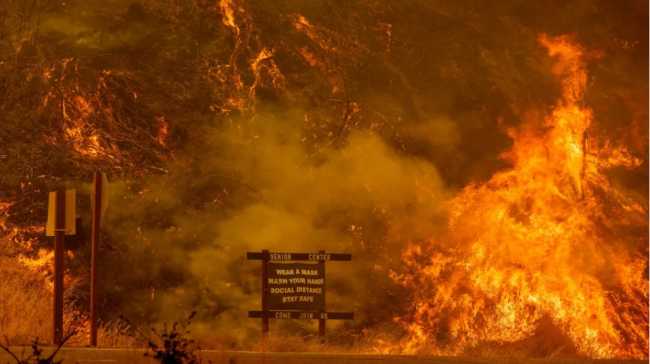Articles Menu

Apr. 28, 2022
Watching the news, it sometimes feels like we are surviving one disaster after another, from record-breaking hurricanes to megadroughts to a global pandemic.
It turns out that this feeling is backed by data. A new UN report found that the number of medium-to large-scale disasters in the past two decades is actually five times more than the average for the 30 years before, as France 24 reported.
“The world needs to do more to incorporate disaster risk in how we live, build and invest, which is setting humanity on a spiral of self-destruction,” Deputy Secretary-General of the United Nations Amina J. Mohammed said in a press release.
Mohammed presented the new report, titled “Our World at Risk: Transforming Governance for a Resilient Future,” at UN headquarters in New York on Tuesday. The report, from the UN Office for Disaster Risk Reduction (UNDRR) found that there were 350 to 500 medium-to large-scale disasters every year of the last 20 years. These disasters included extreme weather events fueled by the climate crisis, pandemics and chemical accidents, according to Reuters. And the situation is only expected to get worse. By 2030, there could be 560 disasters a year, or 1.5 a day.
The climate crisis is a major contributor to the problem. By 2030, there will be three times more extreme heat waves than in 2001 and 30 percent more droughts, AP News reported. However, these climate-fueled events can also interact with other disasters, like the war in Ukraine or the coronavirus pandemic, to put additional strain on impacted populations.
The report also found that disasters are getting costlier and deadlier. They cost a total of $70 billion a year in 1990, which has risen to more than $170 billion today after adjusting for inflation. While deaths were decreasing for years because of better warnings and planning, they increased significantly in the last five years when compared to the previous five.
The report authors said one reason for the increased impact was that disasters are now occurring in places that they didn’t before. Overall, disasters disproportionately impact developing countries and the poorer people who live within them, according to the press release. These countries lose about one percent of their Gross Domestic Product (GDP) a year because of disasters, compared to 0.1 to 0.3 percent for developed countries. The Asia-Pacific region is the hardest hit, sacrificing an average of 1.6 percent of its GDP every year.
The report said that part of the problem was “optimism, underestimation and invincibility,” which led policy makers to inadequately assess the risk.
“Disasters can be prevented, but only if countries invest the time and resources to understand and reduce their risks,” Mami Mizutori, Special Representative of the Secretary-General for Disaster Risk Reduction and Head of UNDRR, said in the press release. “By deliberately ignoring risk and failing to integrate it in decision making, the world is effectively bankrolling its own destruction. Critical sectors, from government to development and financial services, must urgently rethink how they perceive and address disaster risk.”
For example, around 90 percent of disaster spending currently goes to immediate relief, while only six percent goes to reconstruction and four percent to prevention, AP News reported.
Insurance is another factor. Since 1980, only 40 percent of disaster losses have actually been insured, Reuters reported.
“The financial system really needs to get ahead of this curve, because otherwise there’s a lot of built-up risk that isn’t being priced into how we make decisions,” coordinating lead author Jenty Kirsch-Wood told Reuters.